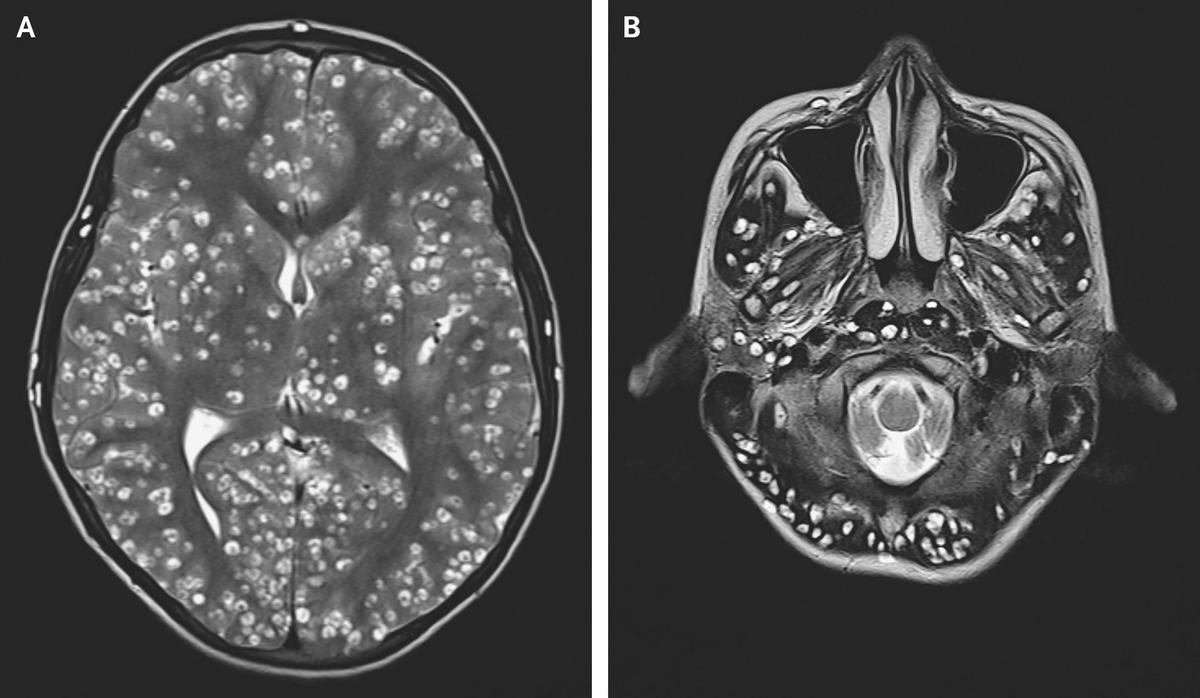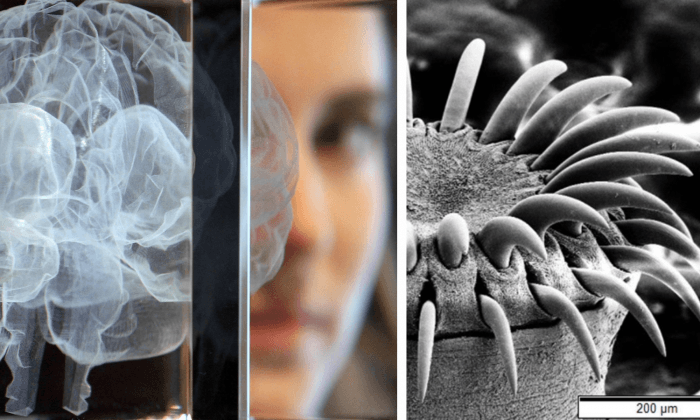Rachel Palma was unwilling to believe the news when doctors told her she had a malignant tumor in her brain.
Palma, 42, from Middletown, New York, said she had been having strange symptoms for some time: hallucinations, insomnia, and horrific nightmares to name a few.
An MRI scan showed a marble-sized lesion on the left side of Palma’s brain, right next to the area of the brain that controls speech.
‘Wow, This is Great!’
When neurosurgeons operated on Palma at Mount Sinai Hospital in New York City in September, they found not a brain tumor with characteristics of malignancy—diffuse, with indistinct margins—but a “very firm, very well-encapsulated thing,” one doctor, Jonathan Rasouli, told Today. Rasouli is chief neurosurgery resident at the Icahn School of Medicine at Mount Sinai.“It looked like a quail egg,” Rasouli said.
Rasouli and another neurosurgeon, Dr. Raj Shrivastava, removed the mysterious, distinct lesion in one piece and then cut it open.
“Sure enough, a baby tapeworm came out of that lesion,” Rasouli recounted to Today. “She had a single parasite in her head that we were able to take out—we were very happy. It was one of those rare situations where you see a parasite and you’re like, ‘Wow, this is great!’”
While parasites are normally treated with antibiotics, doctors were relieved to realize that the lesion was not a malignant tumor and that Palma would not need further chemotherapy or radiation.
Palma was somewhat disgusted upon hearing the news post-surgery.
Tapeworms in the Brain
Palmer’s condition is referred to as neurocysticercosis, where cysts form in the brain, caused by a tapeworm infection from eating undercooked pork or other infected foods, or drinking water containing tapeworm eggs. Neurocysticercosis is a major cause of epileptic fits in the developing world.The CDC provides one possible case by which a person may get neurocysticercosis: “For example, a person eats undercooked, infected pork and gets a tapeworm infection in the intestines. She passes tapeworm eggs in her feces.
“If she doesn’t wash her hands properly after using the bathroom, she may contaminate food or surfaces with feces containing these eggs.
“These eggs may be swallowed by another person if they eat contaminated food. Once inside the body, the eggs hatch and become larvae that find their way to the brain. These larvae cause neurocysticercosis.”
Palmer herself doesn’t know where she had picked up the parasite—she hasn’t traveled to any countries where the tapeworm is endemic, and she hasn’t eaten raw meat.
But she said she’s happier not to know.
“I stopped asking questions and started celebrating, and making the most out of life because in an instant it can be taken away,” she told WABC.
Teenager Dies After Brain Becomes Riddled With Tapeworm Cysts
In related news, a teenager died after his brain became riddled with hundreds of tapeworm larvae, often picked up from eating undercooked pork. The unnamed 18-year-old in India was featured in the New England Journal of Medicine, which showed MRI scans of his brain, dotted with white specks where the cysts had formed.The boy was admitted to ESIC Hospital in Faridabad, India, suffering from “tonic-clonic” epileptic fits.
The tonic-clonic seizures are what used to be known as grand mal seizures.
As the name suggests, the seizures have two phases. First, the person loses consciousness and their muscles go stiff, causing them to fall to the floor if they are standing. Then, their limbs jerk rhythmically.
The Indian teen was in a confused state, with swelling over his right eye and a pain in his groin. Ultrasound revealed that the pain in his groin and eye was caused by cysts in those regions, which turned out to be tapeworm larvae.

While anti-parasitic medicines can be used to treat tapeworm infections, the teenager had so many cysts that his doctors feared the drugs would cause further inflammation in his brain and eyes.
He was treated instead with the steroid dexamethasone and antiepileptic medications, but died two weeks later.






Friends Read Free